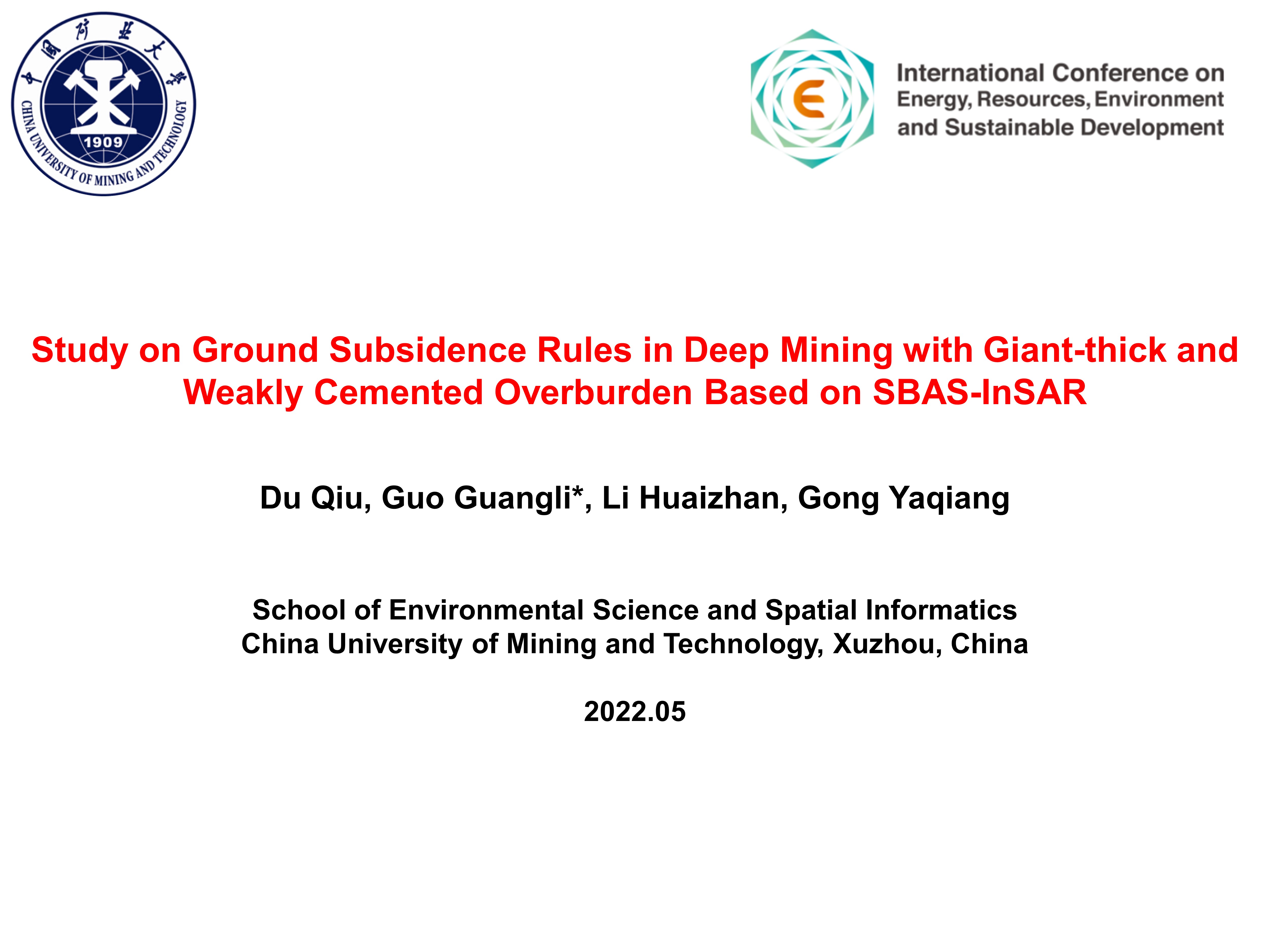Study on Ground Subsidence Rules in Deep Mining with Giant-Thick and Weakly Cemented Overburden Based on SBAS-InSAR
ID:442
View Protection:PUBLIC
Updated Time:2022-05-21 14:28:00
Hits:1361
Poster Presentation

Start Time:2022-05-27 18:02 (Asia/Shanghai)
Duration:1min
Session:[ps] Poster Seesion » [ps] Poster Session
Abstract
The surface subsidence induced by large-scale and high-intensity mining activities in western China poses a serious threat to the safety of various structures such as houses, roads, gas transmission lines, and the fragile ecological environment. In order to reveal the law of surface subsidence under deep mining with giant-thick and weakly cemented overburden in the west, this study takes Yingpanhao Coal Mine in Inner Mongolia as the test site, and uses SBAS-InSAR technology to obtain the time series of surface vertical displacement during the mining process of the 2401 working face. Based on the monitoring results, the spatial and temporal distribution characteristics of vertical displacements on the major cross-section along the advancing direction (MCAD) were analyzed with emphasis. It was found that under the non-sufficient mining condition, the surface settlement has the characteristics of small amount but extensive coverage. The subsidence curve on the MCAD is not symmetrical, but is divided into the west subsection, the east subsection and the east uplift section by the maximum subsidence point and the open cut eye. The settlement (W) of each point in the subsidence area linearly changes with the advancing length (L) of the working face, and has four types of change patterns. The functional expressions of each pattern and the empirical function of slope k are given. This study can provide reliable empirical information for further analysis of the elastic bearing capacity of giant-thick weakly cemented overburden, and useful references for accurate prediction of surface subsidence under deep mining in the western China.
Keywords
deep mining, weakly cemented overburden, mining subsidence, SBAS-InSAR
Speaker
Qiu DU
China University of Mining and TechnologyDu Qiu received the Bachelor’s degree in surveying engineering from China University of Mining and Technology, Xuzhou, China, in 2016. He is currently working toward the Ph.D. degree in geodesy and surveying engineering with the School of Environmental Science and Spatial Informatics, China University of Mining and Technology.
His research interests are TS-InSAR and its applications on mining subsidence.
Comment submit